MODULE 3-PATTERN VS. SURFACE
In M3, we are required to use paneling tools in Rhino to build a developable surface according to the characters of our allocated drawings and Tasmanian terrain.
Work based on Sandro Botticelli, The Virgin Adoring the Child, 1490, Milan, Museo Poldi Pezzol.
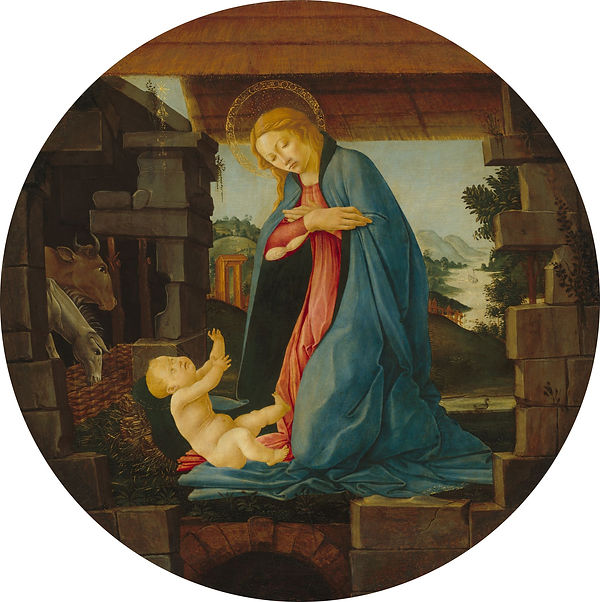
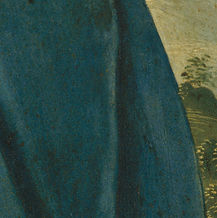.jpg)
Fabric and Terrain Study
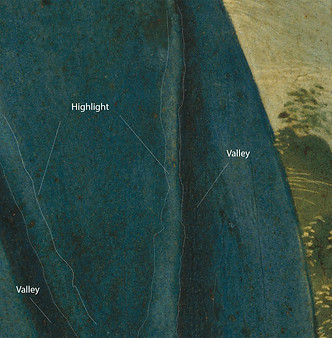
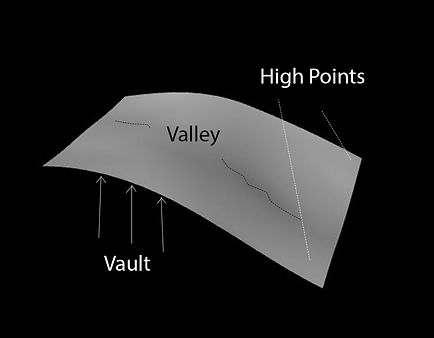
In the drawing I’ve been allocated with, there are two large, smooth folds from the top to the bottom, which forms a triangular zone with two sides are highlighted. the terrain as a whole shows an arc-shape formed by two slopes. There is a hollow area on the gentle slope, while in the drawing there is also a hollow area in the middle of the triangle, which is a favorable condition for me to integrate the painting and the terrain.
Grid Study
Artifact 1
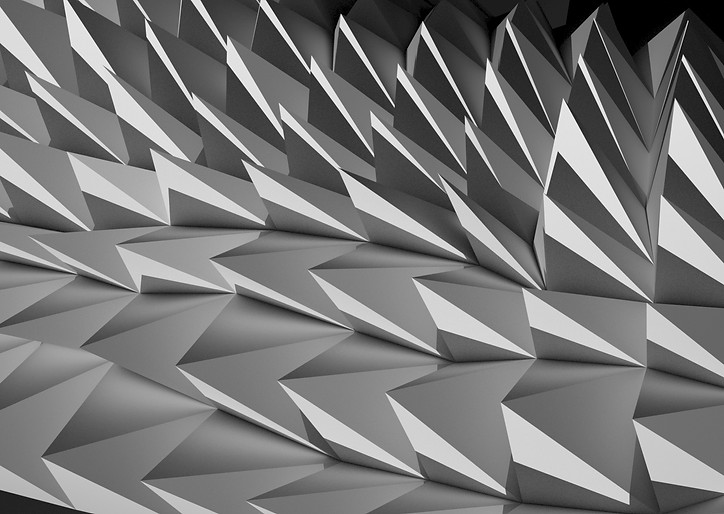
Chosen Grid
Based on the observation above, I tried to create a model that has a triangular zone in which there are two lines of the high points and a hollow part in the middle. In the grid study, I used two curve attractors to build the triangular zone.

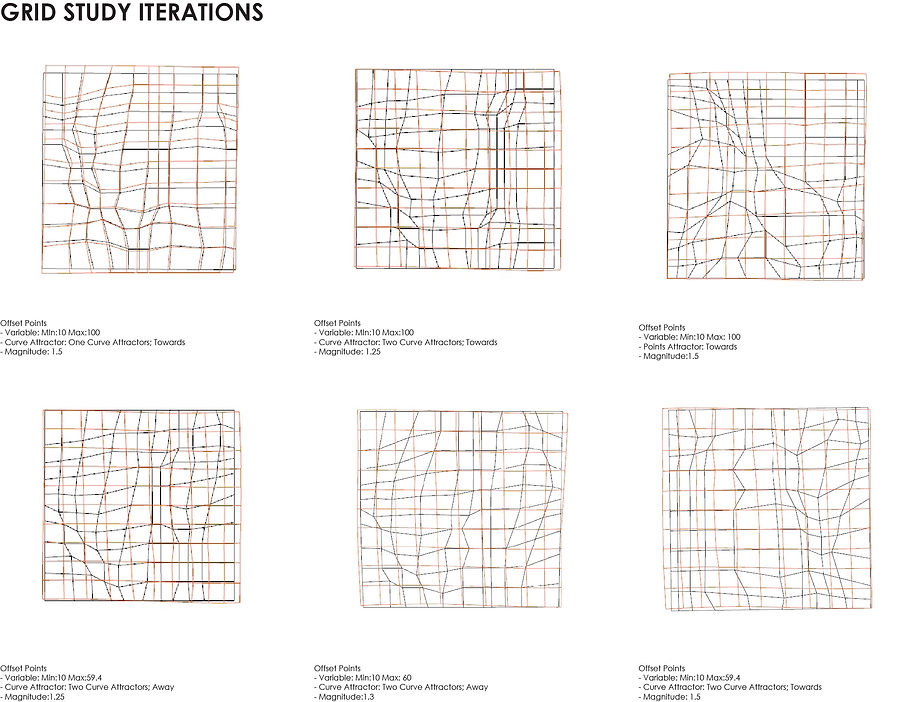
Panel Study
Artifact 2

When it comes to panel study, I tried to make the panels in the triangular zone higher than their surroundings, and use more complicated panels along the two curves, where exist the dark areas of the painting. I did this to have more concentrated lines in the dark area in my composite, which can intensify the contrast between the higher place of the fabric and the lower place.
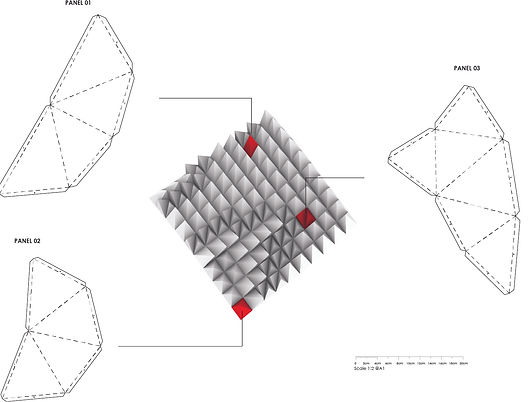
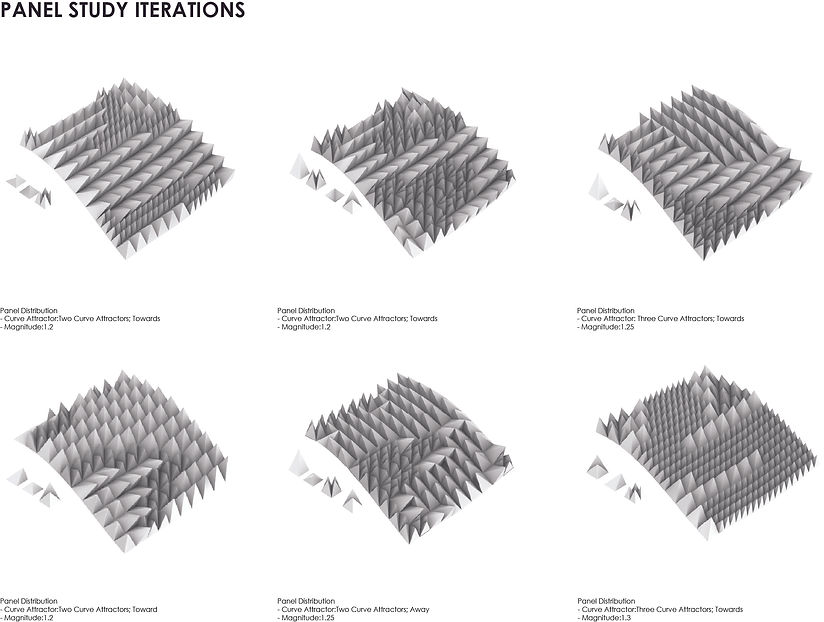
Hybrid
Artifact 3
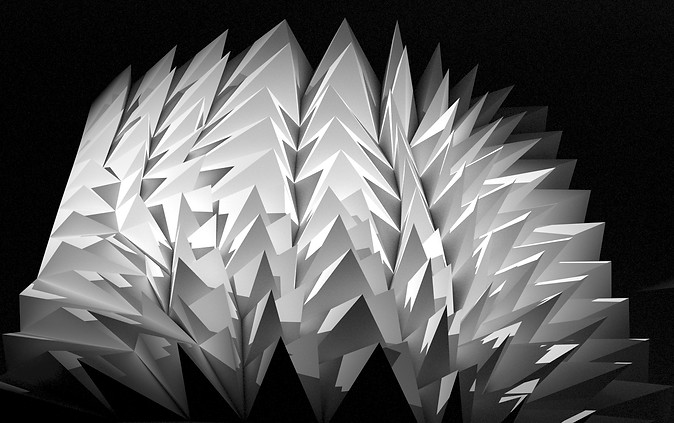
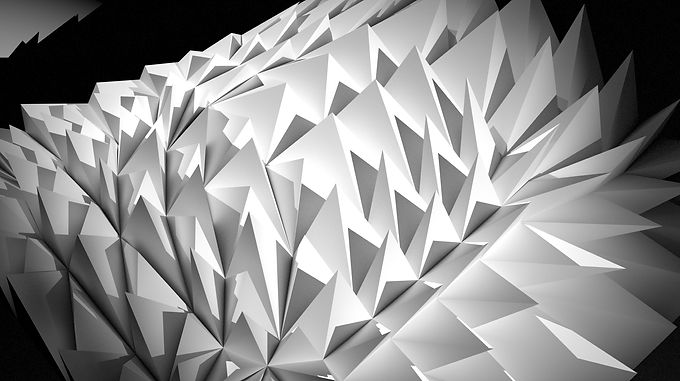
Anatomy
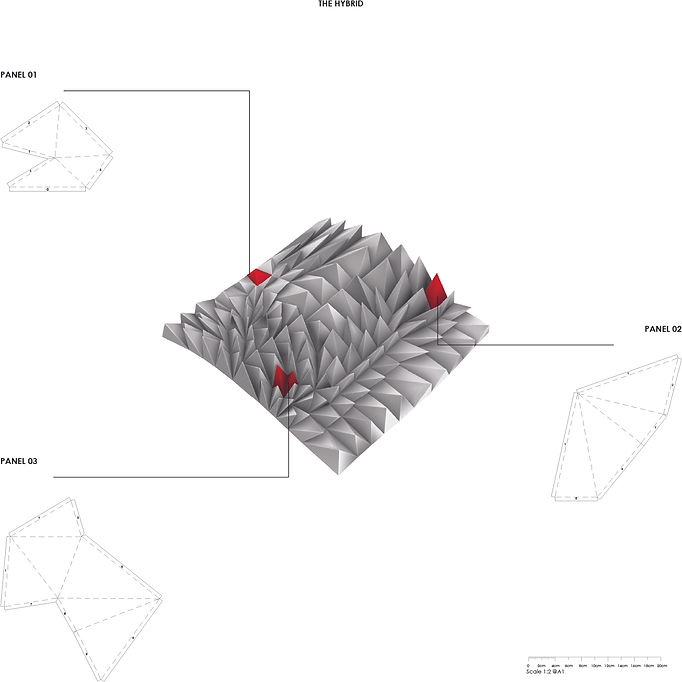
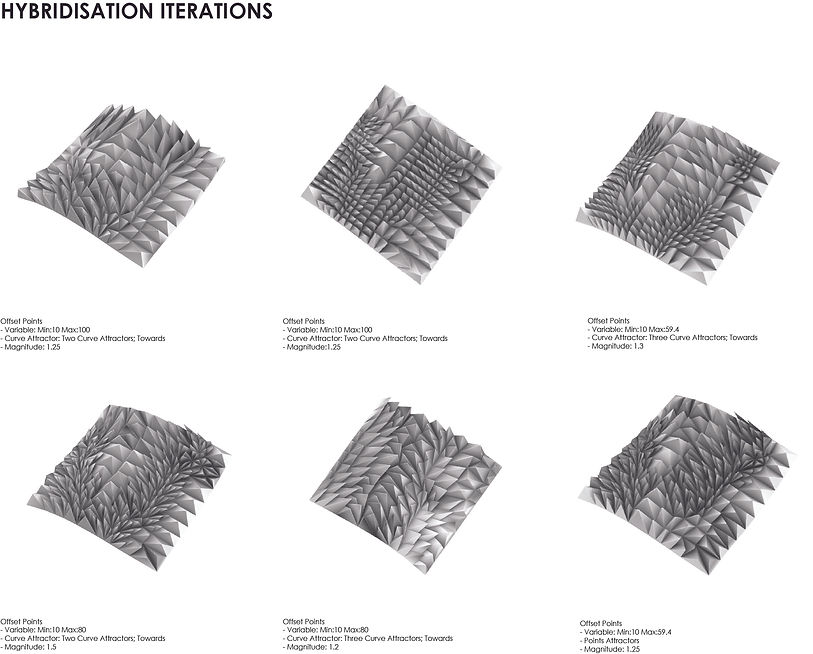
Unrolled Panels for Hybrid
The Final Artifact
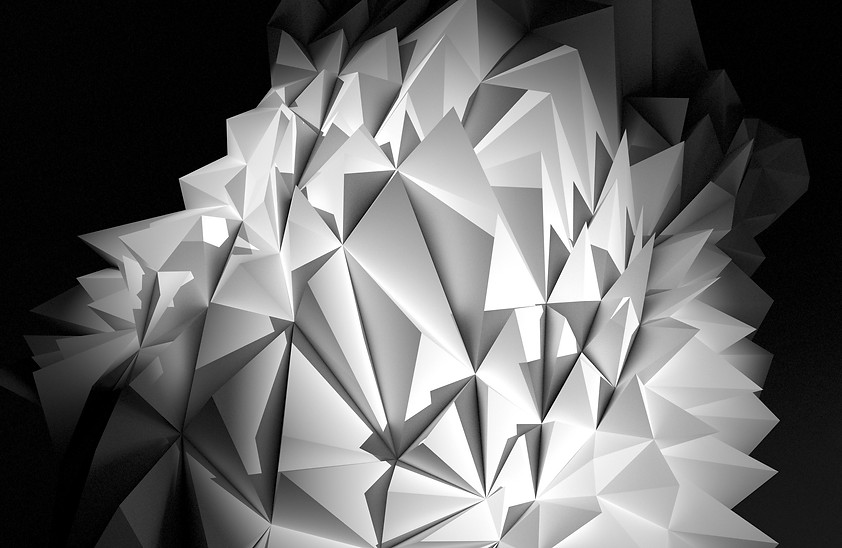
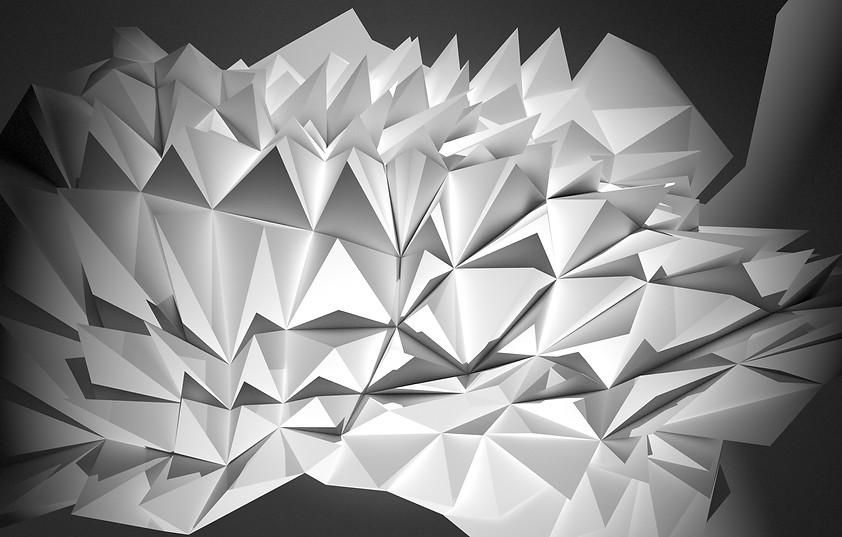
The Composite
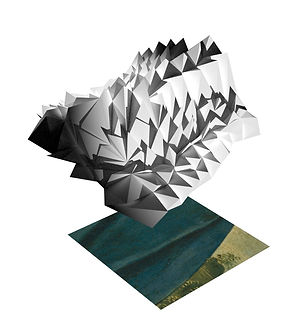
When I turned the hybrid into the artifact, I spent much time on the alignment of the pyramids, trying to make it coincide with the flow of the fabric. Also, I adjusted the altitude of panels in different zones, to maximize the effect of the folding cloth.
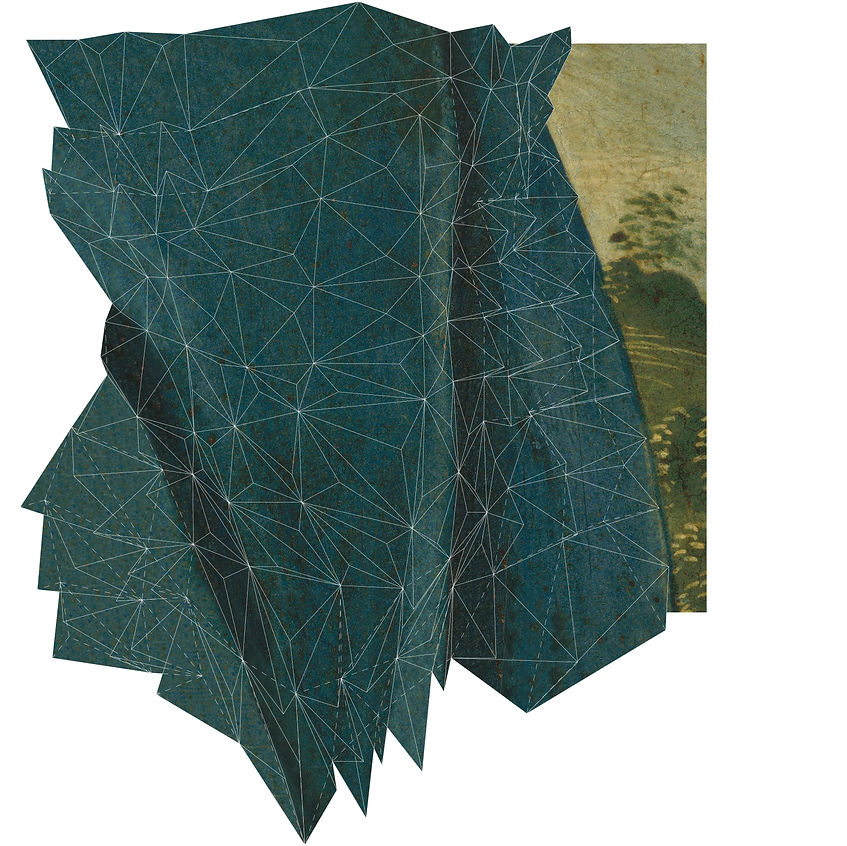
Reflection
Generally speaking, the composite shows the flow and level changes of the cloth in the original painting. However, with the addition of geometric web, the soft fabric lines become stronger compared to the original drawing. Because the lines work as segmentation, the intersection of light and shade of the original painting becomes particularly obvious, and the transition effect of the original picture is weakened, which leads to the triangle area as the main body of the composite becoming more obvious and prominent. In some areas, there are even three-dimensional effects, such as the arc-like shape from the right line towards the triangle area.
This combination of a 3-dimensional surface and a 2-dimensional pattern creates a unique painting which has the duality of plane and solid, it shows different artifact from different angles and in different areas. In the areas where the folds happen, it looks similar to a tough cloth which can remain the shape of a arch, while in other areas it just look like cloth that radiate itself from the folding area. The 3-dimensional surface changes the original texture of the fabric, regionalizing the continuous fabric in to small units, and each unit has a contrast to other units regarding to shape and color, which increases the saturation of the image.
However, the 3-dimensional surface cannot entirely match the 2-dimensional pattern after adjustment, these limits make the composite strange and twisted in some areas, due to the conflicts of the texture of the fabric and the shape of certain geometries.